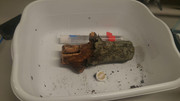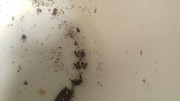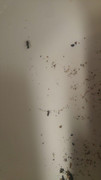Hello community,
I'm working in a university research lab and I am planning on doing some experimental work involving ants. Because I have never kept ant colonies in the past, I am a complete newby in the topic and I would like some advice from the experienced.
To go into a bit more detail in what I want exactly:
1. I want to use pavement ants, camponotus species or other ants of comparable size (their large size makes them much more suitable for the work I want to do). When and where are the best time and place to capture a queen after nupital flight or to dig up a colony? Any special tricks that I should be aware of? Also I would like a setup that are tailored specifically for these species- what are some things that I need to keep in mind?
2. Since I will need to tend to multiple colonies (to avoid loss of colony creating a bottleneck for experiments), and also since I will be working on projects other than those involving ants, I want to spend as little time as possible for the maintenance. If you know any tips and tricks on simplifying the process of feeding, humidity and waste management, e.g. automatizing it with some computer controlled setup, or, if you think it would be possible to establish a self-sustaining microecosystem, please share your thoughts.
3. I want to be able to perform experiments that require us to kidnap a few hundred workers from a colony for a few hours (no more than, say, 12 hours), and I want to make sure the colony will grow to the size where this is not going to be an issue. This means I need to grow colonies fast, and maintain large numbers throughout the year. The more ants I can kidnap for experiments, the better.
We have pretty much all the standard bio/chem laboratory supplies (test tubes, 1/4" vinyl tubes, petri dish, etc.), access to most crafting tools including CNC, 3d printer and laser cutter. I think we can spare up to a couple hundred dollars to get started- we could probably afford more but I will have to give a good reason to my PI. I would prefer to utilize the resources we have before having to purchase something extra.
Also, if you have other ants you want to recommend, please let me know what species and where they can be found naturally or purchased. I would prefer something that is found commonly across Midwestern US since the paperwork for getting permit to import foreign ants seems like a nightmare and I want to avoid it as much as possible.
Thanks!


























